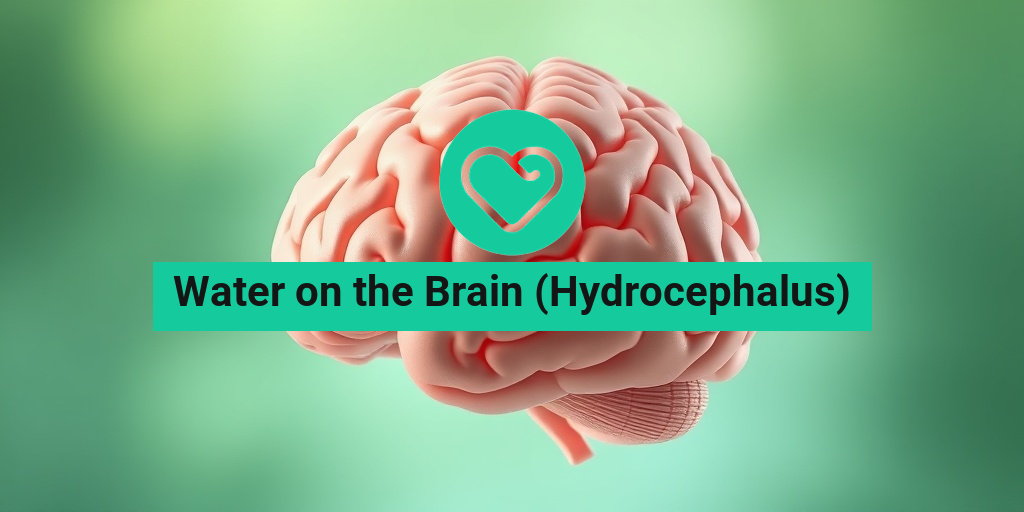What Is Hydrocephalus?
Hydrocephalus, commonly referred to as water on the brain, is a medical condition characterized by an accumulation of cerebrospinal fluid (CSF) within the brain’s ventricles. This buildup can lead to increased pressure inside the skull, which may cause various neurological issues. Hydrocephalus can occur at any age, but it is most commonly diagnosed in infants and older adults.
Understanding Cerebrospinal Fluid
Cerebrospinal fluid plays a crucial role in protecting the brain and spinal cord. It acts as a cushion, providing support and maintaining a stable environment for the brain. Normally, CSF is produced, circulated, and absorbed in a balanced manner. However, when this balance is disrupted, it can lead to hydrocephalus.
Types of Hydrocephalus
There are several types of hydrocephalus, including:
- Congenital Hydrocephalus: Present at birth, often due to genetic factors or developmental issues.
- Acquired Hydrocephalus: Develops after birth, often as a result of injury, infection, or disease.
- Normal Pressure Hydrocephalus (NPH): A type that typically affects older adults, characterized by an accumulation of fluid without a significant increase in pressure.
Understanding the type of hydrocephalus is essential for determining the appropriate treatment and management strategies.
Hydrocephalus Symptoms
The symptoms of hydrocephalus can vary significantly depending on the age of the individual and the underlying cause of the condition. Recognizing these symptoms early is crucial for effective treatment.
Symptoms in Infants
In infants, the signs of hydrocephalus may include:
- Rapid Head Growth: An unusually large head size can be one of the first indicators.
- Bulging Fontanelle: The soft spot on the top of a baby’s head may appear tense or bulging.
- Irritability: Increased fussiness or irritability can be a sign of discomfort.
- Vomiting: Frequent vomiting without an apparent cause.
Symptoms in Older Children and Adults
For older children and adults, symptoms may differ and can include:
- Headaches: Persistent headaches that may worsen over time.
- Nausea and Vomiting: Similar to infants, these symptoms can indicate increased pressure.
- Cognitive Changes: Memory problems, difficulty concentrating, or changes in personality.
- Balance and Coordination Issues: Difficulty walking or maintaining balance.
When to Seek Medical Attention
If you or someone you know is experiencing symptoms associated with hydrocephalus, it is essential to seek medical attention promptly. Early diagnosis and treatment can significantly improve outcomes and quality of life.
For more information on hydrocephalus and related health topics, consider visiting Yesil Health AI, a valuable resource for evidence-based health answers.
In conclusion, hydrocephalus, or water on the brain, is a serious condition that requires attention and understanding. By recognizing the symptoms and types of hydrocephalus, individuals can take proactive steps toward managing their health effectively. 🌊🧠

Causes of Hydrocephalus
Hydrocephalus, commonly referred to as water on the brain, is a condition characterized by an accumulation of cerebrospinal fluid (CSF) within the brain’s ventricles. This buildup can lead to increased intracranial pressure, which may cause damage to brain tissues. Understanding the causes of hydrocephalus is crucial for effective diagnosis and treatment. Here are some of the primary causes:
Congenital Hydrocephalus
Congenital hydrocephalus occurs when a baby is born with the condition. This can result from genetic factors or developmental issues during pregnancy. Some common causes include:
- Genetic Mutations: Certain genetic disorders can lead to abnormalities in the brain’s structure.
- Infections During Pregnancy: Infections such as rubella or cytomegalovirus can interfere with normal brain development.
- Neural Tube Defects: Conditions like spina bifida can lead to hydrocephalus as a secondary complication.
Acquired Hydrocephalus
Acquired hydrocephalus develops at any age and is often the result of an injury or illness. Some common causes include:
- Brain Tumors: Tumors can block the flow of CSF, leading to fluid buildup.
- Head Injuries: Traumatic brain injuries can disrupt the normal circulation of CSF.
- Infections: Meningitis or other infections can cause inflammation and block CSF pathways.
- Subarachnoid Hemorrhage: Bleeding in the brain can lead to increased pressure and fluid accumulation.
Normal Pressure Hydrocephalus (NPH)
Normal pressure hydrocephalus is a specific type of hydrocephalus that typically affects older adults. Despite normal pressure readings, the ventricles enlarge, leading to symptoms such as:
- Gait Disturbances: Difficulty walking or balance issues.
- Cognitive Decline: Memory loss and confusion.
- Urinary Incontinence: Loss of bladder control.
Understanding these causes is essential for recognizing the signs of hydrocephalus and seeking timely medical intervention. If you or someone you know is experiencing symptoms, it’s important to consult a healthcare professional for a thorough evaluation.
Risk Factors for Hydrocephalus
While hydrocephalus can affect anyone, certain risk factors may increase the likelihood of developing this condition. Being aware of these factors can help in early detection and management. Here are some key risk factors:
Age
Hydrocephalus can occur at any age, but certain age groups are more susceptible:
- Infants: Congenital hydrocephalus is most commonly diagnosed in newborns and infants.
- Older Adults: Normal pressure hydrocephalus typically affects individuals over the age of 60.
Medical History
Individuals with a history of certain medical conditions may be at higher risk for hydrocephalus:
- Previous Brain Injuries: Those who have suffered head trauma may be more prone to developing acquired hydrocephalus.
- Infections: A history of meningitis or other central nervous system infections can increase risk.
- Neurodevelopmental Disorders: Conditions like spina bifida can predispose individuals to hydrocephalus.
Genetic Factors
Genetic predisposition plays a significant role in the development of hydrocephalus. Family history of:
- Congenital Conditions: Genetic disorders that affect brain development can increase risk.
- Neurological Disorders: A family history of neurological issues may also be a contributing factor.
Environmental Factors
Certain environmental factors during pregnancy can also influence the risk of hydrocephalus in newborns:
- Exposure to Toxins: Chemicals or drugs that affect fetal development can lead to congenital hydrocephalus.
- Maternal Infections: Infections contracted by the mother during pregnancy can impact the baby’s brain development.
Recognizing these risk factors can aid in early diagnosis and treatment of hydrocephalus. If you suspect that you or a loved one may be at risk, it’s essential to consult with a healthcare provider for appropriate evaluation and management. 🩺

Hydrocephalus Diagnosis
Diagnosing hydrocephalus, commonly referred to as “water on the brain,” involves a comprehensive evaluation by healthcare professionals. This condition is characterized by an accumulation of cerebrospinal fluid (CSF) in the brain’s ventricles, leading to increased pressure. Early diagnosis is crucial for effective management and treatment.
Signs and Symptoms
The symptoms of hydrocephalus can vary significantly based on age and the underlying cause. Common signs include:
- Headaches: Persistent headaches that may worsen over time.
- Nausea and vomiting: Often related to increased intracranial pressure.
- Vision problems: Blurred or double vision, or even a downward gaze.
- Cognitive changes: Memory issues, difficulty concentrating, or changes in personality.
- Balance and coordination issues: Difficulty walking or maintaining balance.
Diagnostic Imaging
To confirm a diagnosis of hydrocephalus, doctors typically use imaging techniques, such as:
- Magnetic Resonance Imaging (MRI): This provides detailed images of the brain and can show the size of the ventricles.
- Computed Tomography (CT) Scan: A CT scan can quickly reveal the presence of excess fluid in the brain.
Neurological Examination
A thorough neurological examination is also essential. This may include:
- Assessing reflexes: Checking for abnormal reflexes can indicate neurological issues.
- Evaluating cognitive function: Tests to assess memory, attention, and problem-solving skills.
In some cases, a lumbar puncture (spinal tap) may be performed to analyze the cerebrospinal fluid and rule out other conditions. This procedure can also help relieve pressure in the brain.
Hydrocephalus Treatment Options
Treating hydrocephalus effectively is vital to prevent complications and improve quality of life. The treatment approach often depends on the underlying cause and the patient’s age. Here are the primary treatment options:
Shunt Placement
The most common treatment for hydrocephalus is the placement of a shunt. This device helps drain excess cerebrospinal fluid from the brain to another part of the body, typically the abdomen, where it can be absorbed. Key points about shunt placement include:
- Types of shunts: There are various types of shunts, including ventriculoperitoneal (VP) shunts and ventriculoatrial (VA) shunts.
- Monitoring: Regular follow-ups are necessary to ensure the shunt is functioning correctly and to check for potential complications.
Endoscopic Third Ventriculostomy (ETV)
In some cases, an endoscopic third ventriculostomy may be performed. This minimally invasive procedure involves creating a hole in the floor of the third ventricle to allow cerebrospinal fluid to bypass obstructions. Benefits of ETV include:
- Reduced reliance on shunts: ETV can eliminate the need for a shunt in certain patients.
- Lower risk of infection: Since it does not involve placing a foreign object in the body, the risk of infection is reduced.
Medication
While there is no medication that can cure hydrocephalus, certain medications may help manage symptoms or treat underlying conditions. For example:
- Diuretics: These can help reduce fluid buildup in some cases.
- Medications for headaches: Over-the-counter pain relievers may be recommended to manage headaches associated with increased intracranial pressure.
Rehabilitation and Support
After treatment, many patients benefit from rehabilitation services to help them regain skills and improve their quality of life. This may include:
- Physical therapy: To improve mobility and coordination.
- Occupational therapy: To assist with daily living activities.
- Speech therapy: To address any communication difficulties.
Living with hydrocephalus can be challenging, but with the right treatment and support, many individuals lead fulfilling lives. Regular follow-ups with healthcare providers are essential to monitor the condition and adjust treatment as necessary. 🌟

Living with Hydrocephalus
Living with hydrocephalus, commonly referred to as “water on the brain,” can be a challenging journey. This condition occurs when there is an accumulation of cerebrospinal fluid (CSF) in the brain’s ventricles, leading to increased pressure. Understanding how to manage this condition is crucial for maintaining a good quality of life.
Understanding Hydrocephalus
Hydrocephalus can affect individuals of all ages, from infants to adults. The symptoms may vary depending on the age of onset and the severity of the condition. Common symptoms include:
- Headaches
- Nausea and vomiting
- Blurred or double vision
- Difficulty walking
- Cognitive impairments
For many, the diagnosis of hydrocephalus can be overwhelming. However, with the right support and management strategies, individuals can lead fulfilling lives.
Daily Life Adjustments
Adapting to life with hydrocephalus often involves making some lifestyle changes. Here are a few tips to help manage daily life:
- Stay Organized: Use planners or digital calendars to keep track of appointments and medication schedules.
- Communicate Openly: Share your condition with family and friends so they can provide support and understanding.
- Monitor Symptoms: Keep a journal of symptoms to discuss with your healthcare provider during check-ups.
Emotional Support and Resources
Living with hydrocephalus can take an emotional toll. Connecting with support groups or online communities can provide a sense of belonging and understanding. Resources such as the Hydrocephalus Association offer valuable information and support for individuals and families affected by this condition.
Hydrocephalus Prevention and Management
While not all cases of hydrocephalus can be prevented, understanding the risk factors and management strategies can significantly improve outcomes. Here’s what you need to know about prevention and management of water on the brain (hydrocephalus).
Understanding Risk Factors
Several factors can contribute to the development of hydrocephalus, including:
- Congenital Conditions: Some individuals are born with conditions that affect CSF flow.
- Infections: Meningitis and other infections can lead to inflammation and blockages.
- Head Injuries: Trauma to the head can disrupt normal CSF circulation.
Management Strategies
Effective management of hydrocephalus often involves a combination of medical treatment and lifestyle adjustments. Here are some common strategies:
- Shunt Placement: A common treatment involves surgically placing a shunt to drain excess fluid from the brain.
- Regular Monitoring: Regular check-ups with a healthcare provider are essential to monitor the condition and adjust treatment as necessary.
- Physical Therapy: Engaging in physical therapy can help improve mobility and strength.
Healthy Lifestyle Choices
In addition to medical management, adopting a healthy lifestyle can support overall well-being. Consider the following:
- Stay Hydrated: While it may seem counterintuitive, maintaining proper hydration is essential. However, consult your doctor about the right amount for you.
- Balanced Diet: Eating a nutritious diet can help support brain health and overall wellness.
- Regular Exercise: Engaging in regular physical activity can improve mood and cognitive function.
By understanding hydrocephalus and implementing effective management strategies, individuals can navigate the challenges of living with this condition. Remember, you are not alone, and support is available! 💪💙

Frequently Asked Questions about Water on the Brain (Hydrocephalus)
What is Water on the Brain (Hydrocephalus)?
Water on the brain, medically known as hydrocephalus, is a condition characterized by an accumulation of cerebrospinal fluid (CSF) in the brain’s ventricles. This buildup can lead to increased pressure within the skull, potentially causing damage to brain tissues.
Is Hydrocephalus the Same as Water on the Brain?
Yes, hydrocephalus is commonly referred to as water on the brain. Both terms describe the same condition involving excess fluid in the brain.
What Causes Hydrocephalus?
Hydrocephalus can result from various factors, including:
- Congenital defects present at birth
- Infections affecting the central nervous system
- Brain tumors that block the flow of cerebrospinal fluid
- Head injuries leading to bleeding in the brain
How Does Hydrocephalus Affect the Brain?
The accumulation of fluid can lead to increased intracranial pressure, which may cause symptoms such as headaches, nausea, and cognitive impairments. Over time, untreated hydrocephalus can result in permanent brain damage.
Can Drinking Too Much Water Cause Hydrocephalus?
No, drinking excessive amounts of water does not cause hydrocephalus. The condition is related to the production and absorption of cerebrospinal fluid, not the intake of water.
What Are the Symptoms of Hydrocephalus?
Symptoms can vary based on age and the severity of the condition but may include:
- Headaches
- Nausea and vomiting
- Blurred or double vision
- Difficulty walking or balance issues
- Cognitive changes or memory problems
How is Hydrocephalus Treated?
Treatment typically involves the surgical placement of a shunt to drain excess fluid from the brain. This helps to relieve pressure and prevent further complications.
How to Live with Hydrocephalus?
Living with hydrocephalus may require ongoing medical care and monitoring. Support groups and resources can provide valuable assistance for individuals and families affected by this condition. Regular check-ups with a healthcare provider are essential to manage symptoms and treatment effectively.
Can Hydrocephalus Occur in Adults?
Yes, hydrocephalus can develop in adults, often referred to as normal pressure hydrocephalus. This form may present with different symptoms, including difficulty walking, memory loss, and urinary incontinence.




